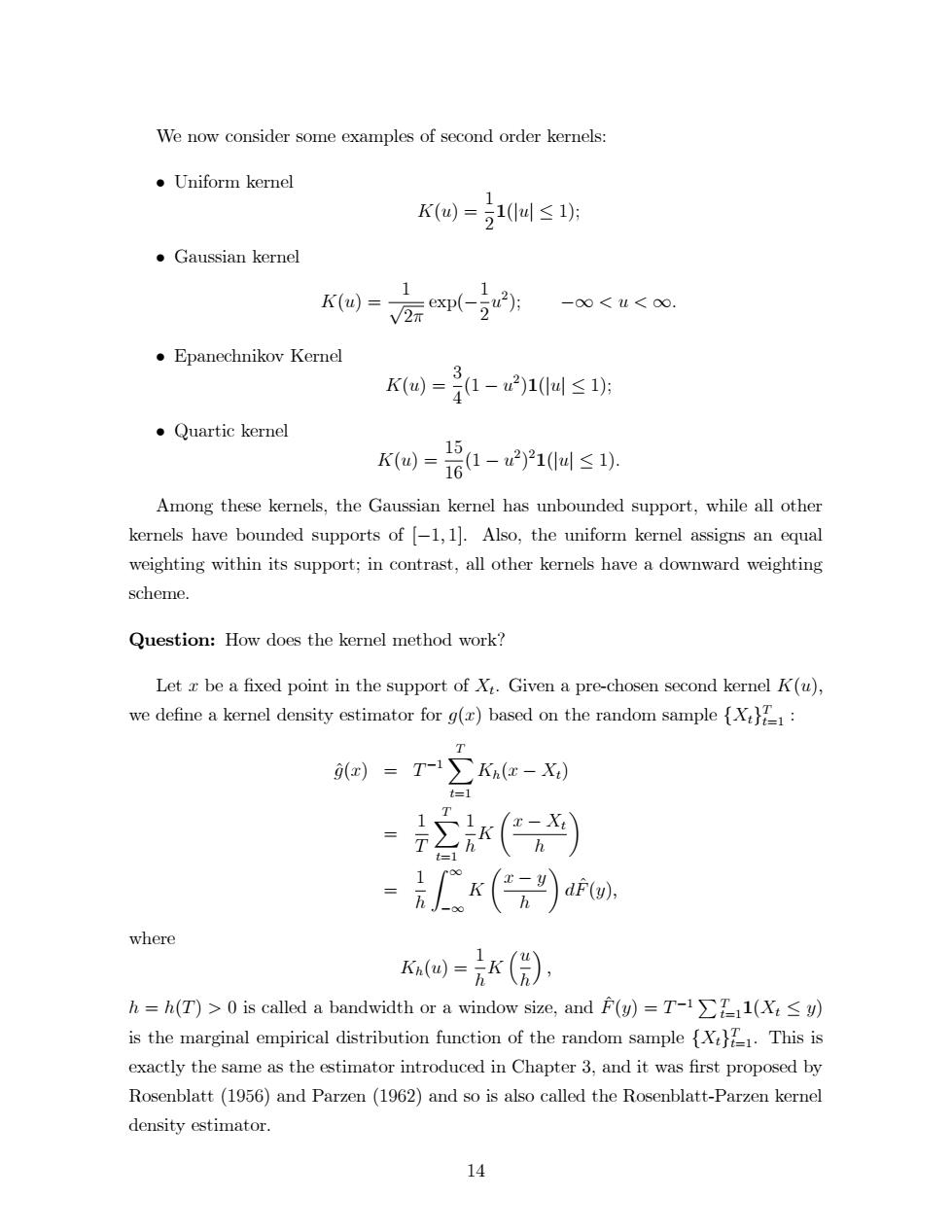正在加载图片...

We now consider some examples of second order kernels: 。Uniform kernel K(四)=u≤1 ●Gaussian kernel 1 1 K四=2(-2方 -0<u<0. ·Epanechnikov Kernel k)-a-210u≤ ●Quartic kernel K回=品1-2Y104≤ 15 Among these kernels,the Gaussian kernel has unbounded support,while all other kernels have bounded supports of [-1,1].Also,the uniform kernel assigns an equal weighting within its support;in contrast,all other kernels have a downward weighting scheme. Question:How does the kernel method work? Let x be a fixed point in the support of Xt.Given a pre-chosen second kernel K(u), we define a kernel density estimator for g()based on the random sample [X (x)=T-1K(x-X) t=1 T where K回=K(分), h=h(T)>0 is called a bandwidth or a window size,andF(y))-T-l∑Zl(Xt≤) is the marginal empirical distribution function of the random sample {X.This is exactly the same as the estimator introduced in Chapter 3,and it was first proposed by Rosenblatt (1956)and Parzen (1962)and so is also called the Rosenblatt-Parzen kernel density estimator. 14We now consider some examples of second order kernels: Uniform kernel K(u) = 1 2 1(juj 1); Gaussian kernel K(u) = 1 p 2 exp( 1 2 u 2 ); 1 < u < 1: Epanechnikov Kernel K(u) = 3 4 (1 u 2 )1(juj 1); Quartic kernel K(u) = 15 16 (1 u 2 ) 21(juj 1): Among these kernels, the Gaussian kernel has unbounded support, while all other kernels have bounded supports of [1; 1]. Also, the uniform kernel assigns an equal weighting within its support; in contrast, all other kernels have a downward weighting scheme. Question: How does the kernel method work? Let x be a Öxed point in the support of Xt . Given a pre-chosen second kernel K(u); we deÖne a kernel density estimator for g(x) based on the random sample fXtg T t=1 : g^(x) = T 1X T t=1 Kh(x Xt) = 1 T X T t=1 1 h K x Xt h = 1 h Z 1 1 K x y h dF^(y); where Kh(u) = 1 h K u h ; h = h(T) > 0 is called a bandwidth or a window size, and F^(y) = T 1 PT t=11(Xt y) is the marginal empirical distribution function of the random sample fXtg T t=1. This is exactly the same as the estimator introduced in Chapter 3, and it was Örst proposed by Rosenblatt (1956) and Parzen (1962) and so is also called the Rosenblatt-Parzen kernel density estimator. 14